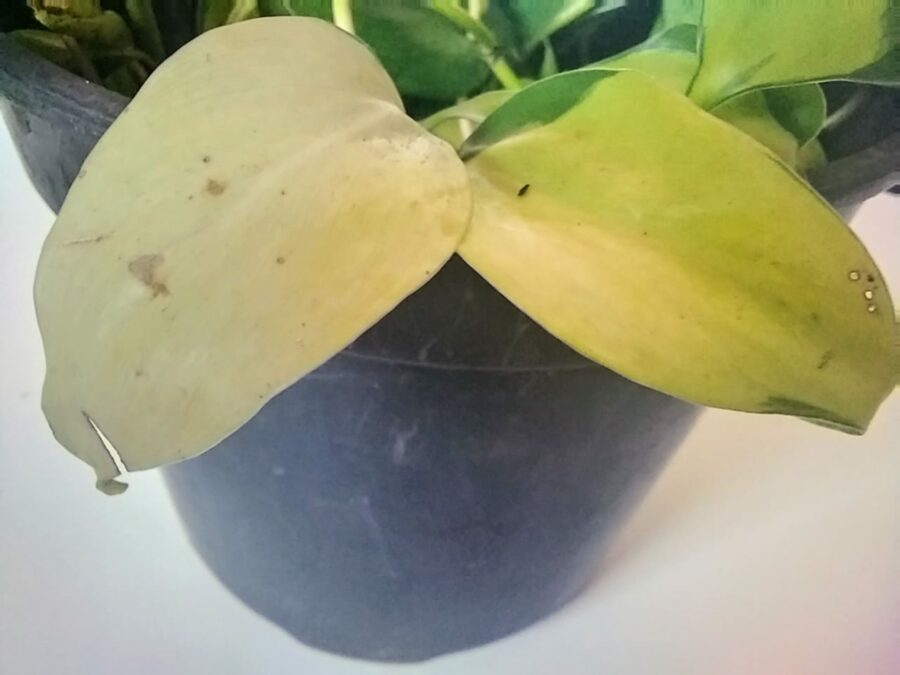Philodendrons are excellent houseplants. They come in various shapes and sizes, so whether you’re a beginner or a master gardener, there’s a plant for everyone. Once you’ve gotten around to growing the smaller varieties, like the heartleaf philodendron, it’ll be easier to care for just about any kind.
When growing philodendrons inside your house, it’s best to provide humidity levels of 50-60%, place the plants in bright light away from direct sunlight, and keep the soil moist.
Carry on reading this post to find out how to take care of philodendron growing indoors.
In this Article
Philodendron General Info
Scientific name
Philodendron
Optimal Hardiness Zones
11-12
Habitat
Humid tropical forests
Philodendron Plant Care Guide
Caring for philodendrons is an exciting learning curve -as I’ve come to learn. They’re low maintenance, but there are some nuances in the conditions they best thrive in. Here’s a detailed guide to growing healthy plants.
Soil
A potting mix with a combination of coconut husk, perlite, and fertilizer is an excellent growing medium for the plant. It’s porous enough to ensure proper drainage and contains enough nutrients for the plant to grow before the next fertilizing session.
However, any indoor or multipurpose well-draining pot mix will work.
Water
Philodendrons don’t like wet feet, nor do they respond well to dry underwatering. It took me a while to understand the plants’ watering needs. When I overwatered the plant, some leaves turned yellow. So, I experimented with the watering schedule until I got it just right. I realized it’s most desirable to hydrate the plants when the topsoil feels dry.
Water until you see droplets dripping from the bottom of the pot – not when lots of water flows through. In winter, it’s best to water two to three times per month, and in summer, every five days.
NOTE: A good rule of thumb when trying to decide whether (or not) to water your plants is to take into consideration the humidity levels inside your home. When humidity levels are low, the plant’s water consumption will increase. Conversely, when humidity is high, it doesn’t use up a lot of water.
Fertilization
Feed your plant during its growing season – once every month from spring to summer. Like most houseplants, philodendrons lie dormant in winter. Any excess chemicals will compound and cause a root burn – avoid fertilizing in winter.
I use a slow-release fertilizer. This ensures I don’t overfeed the plant, and it gets to absorb the nutrients as and when needed.
Humidity
Philodendrons thrive in environments with 40-60% humidity – 50-60% being the optimum. If you live in a dry area with low humidity, it’s best to invest in a humidifier. It’ll increase the moisture levels in your house and promote leaf growth.
If a humidifier is out of the question, consider misting your plants once every week.
Temperature
Because the philodendron is native to the rainforests of South America, it flourishes in tropical climates. It’s best to grow the plant in a warm environment with temperatures ranging from 24-25°C (75-77°F). Anything between 27-28°C (80-82°F) is even better!
Light
Philodendrons grow best in indirect, bright light. They do tolerate low light but thrive in adequate amounts of light. Direct sunlight can burn the plant’s leaves, so if you decide to put your plant next to a window that receives harsh light, you can filter the sun by placing a curtain over the window.
Pruning
Diseased, withered leaves are an indicator that you should prune your plants. Use clean, sterile scissors or pruning shears to trim off affected leaves.
Propagating philodendron plants
When growing creeping varieties, like the heartleaf philodendron, you’ll notice that they’ll start trailing to the ground. To control the spread rate, you can cut off some leaves and use the cuttings to grow new plants. Below’s a step-by-step guide to propagating your philodendron.
What You’ll Need:
- Glass jar, filled with water
- Clean pair of scissors or pruning shears
- Stem cuttings
Method
- Identify the part of the mother plant with nodes.
- Cut right below the node. Ensure there’s at least one leaf on top of the node to produce energy for plant growth.
- Continue cutting any other stems you’d like to propagate.
- Place the cutting in the jar – deep enough to only cover the node.
- Put the container in a bright spot away from direct sunlight.
- When you see roots coming out, transplant the plant into a soil-filled potting container with sufficient drainage holes.
Common Problems with Philodendrons
Philodendron is low maintenance, but here are some problems you might encounter when growing the plant.
Yellow Leaves
If you over-water your philodendron, the plant will likely experience root rot resulting in yellow leaves. To combat this, allow the soil to dry between watering. Also, remove the affected leaves to lessen the stress on the roots and produce new leaf growth. To check for root damage, remove the plant from the pot and assess its roots.
If there are signs of bacterial growth or mold, cut the affected roots using clean shears. Place the plant in a clean pot with fresh soil, water lightly, and then put the container in a bright, warm location.
Curling Leaves
If the leaves of your philodendron curl, it means your plant’s experiencing temperature stress. If it’s too cold, the plant will curl and will unlikely survive. And when it’s too hot, the plant responds by curling inward to preserve any little moisture available.
Leaf curl also occurs when the plant experiences dry spells. It’s best to mist the plant’s leaves to provide humidity levels of 50-60% and water when the soil feels dry.
Frequently Asked Questions
If you have any other questions or concerns, leave them in the comments.
How often should you water a philodendron?
Philodendrons don’t take kindly to being overwatered. Water until you see droplets dripping from the bottom of the pot – not when lots of water flows through.
Allow the soil to dry before the next watering session. In winter, it’s best to water once or twice a month and every five days in summer.
Should I mist my philodendron?
Philodendrons thrive in environments with 40-60% humidity, 50-60% being the best. Misting the plant’s leaves is one of the most effective ways to increase humidity levels, resulting in lush foliage.
Conclusion
Philodendrons are stunning plants to have inside your house. There are several unique varieties to choose from; if they are your favorite plant, you can have a collection of them. Philodendrons tend to do well indoors, provided you replicate the tropical climates they’re used to.
This includes providing them with efficient humidity and moist soil. The problem you’ll most likely experience with the plant is curly or yellow leaves. These are the plant’s natural stress responses, so it’s best to balance out the humidity, temperature, and light of the plant’s environment.
Have you successfully grown a philodendron indoors? Share any success tips or concerns you have in the comments.









